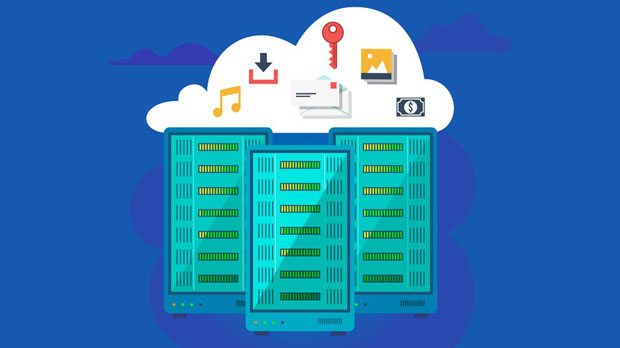In today’s digital age, online security and privacy have become essential concerns. Users often turn to VPNs (Virtual Private Networks) and proxies to safeguard their personal data, mask their IP addresses, and access restricted content. When it comes to Microsoft Edge, both free VPNs and paid proxies claim to enhance users’ browsing experience, but their performance, reliability, and features differ significantly. Free VPNs are often enticing due to their cost (or lack thereof), but they tend to come with limitations in terms of speed, security, and functionality. On the other hand, paid proxies typically offer superior performance, better security protocols, and more stable connections. This article will analyze the differences between free VPNs and paid proxies, particularly focusing on their impact on performance while using Microsoft Edge. Introduction: The Need for VPNs and ProxiesAs internet usage grows, so does the need for privacy and security. A VPN creates a private network over the public internet, allowing users to send and receive data securely, essentially hiding their location and encrypting their internet traffic. Proxies, while similar, serve as an intermediary between the user and the internet, masking the IP address of the user and changing the geolocation. Microsoft Edge, as one of the most widely used browsers, often integrates these services to provide users with additional privacy and speed. However, the differences in performance between free and paid services are crucial for users to consider, especially when deciding which option aligns best with their needs.Free VPN: The Pros and ConsAdvantages of Free VPNsFree VPNs often attract users due to their zero-cost barrier. These VPNs promise to provide users with a secure and anonymous browsing experience without requiring any payment. For users looking for a basic level of privacy and the ability to access geo-blocked content, free VPNs can be a convenient solution. Additionally, many free VPNs are easy to install and user-friendly, making them accessible even to less tech-savvy individuals.Disadvantages of Free VPNsHowever, while free VPNs may seem like a good deal, they come with significant drawbacks. First, free VPNs often offer slower speeds compared to their paid counterparts. This is particularly noticeable when browsing media-heavy websites, streaming videos, or downloading large files. The slower connection speeds can make for a frustrating experience, especially for users who rely on fast internet for work or leisure.Another significant issue with free VPNs is that they tend to have fewer server options. Many free VPNs operate with a limited number of servers, leading to network congestion and even slower speeds. In addition, the encryption protocols used by free VPN services may not be as robust as those used by premium services, compromising user security.Moreover, some free VPN providers have been known to log user data, undermining their primary goal of maintaining privacy. While many free VPNs promise not to collect any user data, the lack of transparency regarding data handling practices makes it difficult for users to fully trust them.Paid Proxies: Why They Offer a Better ExperienceAdvantages of Paid ProxiesPaid proxies provide users with a more reliable and secure internet browsing experience. They often come with a variety of benefits that free VPNs simply cannot offer. For one, paid proxies typically deliver faster speeds and more stable connections. This makes them ideal for activities that require a lot of bandwidth, such as streaming, gaming, or downloading large files. Users will notice significantly improved performance when browsing on Microsoft Edge with a paid proxy compared to a free VPN.Paid proxies also offer more server options. With more servers spread across various locations worldwide, users can enjoy better load balancing and less congestion. This ensures that the proxy service runs smoothly, even during peak hours. Additionally, paid proxies often come with advanced security features, such as strong encryption and authentication protocols, ensuring that users’ data remains safe and private.Moreover, paid proxies are less likely to log user data or engage in practices that undermine privacy. Many paid proxy services have a no-logs policy, meaning they do not store any information about users' online activities, providing a higher level of confidentiality.Disadvantages of Paid ProxiesThe primary disadvantage of paid proxies is, of course, the cost. Users must subscribe to a plan, which can range in price depending on the service provider and the features offered. While paid proxies are generally more reliable and secure, they may not be the most cost-effective option for users who do not need a high level of performance or privacy.Additionally, while paid proxies offer superior performance, users must choose their providers wisely. Not all paid proxies are created equal, and some may not provide the level of speed or security promised. Users should research and ensure they select a reputable service that meets their specific needs.Comparison of Free VPNs and Paid Proxies on Microsoft EdgeWhen using Microsoft Edge, the differences between free VPNs and paid proxies become quite apparent. While free VPNs may suffice for casual browsing or accessing region-locked content, their overall performance, security, and reliability are often compromised. The slower speeds, limited server options, and questionable data logging practices make them less appealing for users who value privacy or require high-speed internet connections.In contrast, paid proxies offer a seamless and secure browsing experience, with faster speeds, better encryption, and more server choices. This makes them the ideal option for users who want to ensure a smooth, private, and efficient online experience on Edge. Whether for streaming, gaming, or general web browsing, paid proxies are more likely to provide the performance users expect.Conclusion: Which Is the Better Option for Edge Users?Ultimately, the choice between a free VPN and a paid proxy depends on the user's needs. If budget is a concern and the user only requires basic privacy for browsing, a free VPN can be an acceptable option, though they should be mindful of the limitations. However, for those seeking reliable speed, robust security, and an optimal experience on Microsoft Edge, a paid proxy is the superior choice. With better performance, stronger privacy protections, and a more stable connection, paid proxies deliver the most comprehensive online browsing experience, making them a worthwhile investment for users who prioritize privacy and speed.
May 21, 2025






















































